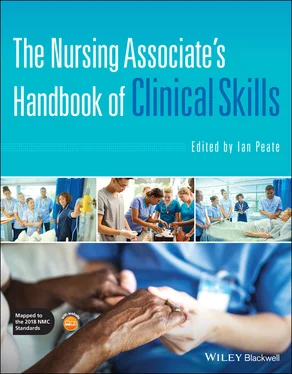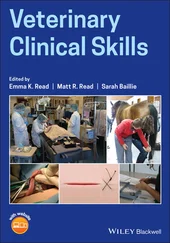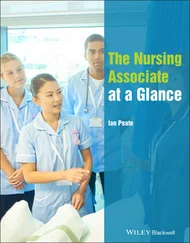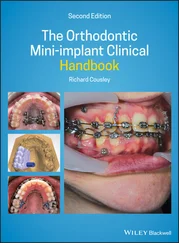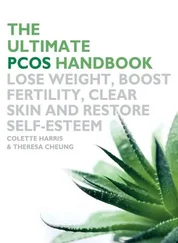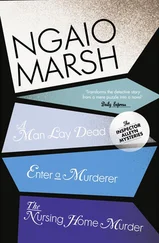The Nursing Associate's Handbook of Clinical Skills
Здесь есть возможность читать онлайн «The Nursing Associate's Handbook of Clinical Skills» — ознакомительный отрывок электронной книги совершенно бесплатно, а после прочтения отрывка купить полную версию. В некоторых случаях можно слушать аудио, скачать через торрент в формате fb2 и присутствует краткое содержание. Жанр: unrecognised, на английском языке. Описание произведения, (предисловие) а так же отзывы посетителей доступны на портале библиотеки ЛибКат.
- Название:The Nursing Associate's Handbook of Clinical Skills
- Автор:
- Жанр:
- Год:неизвестен
- ISBN:нет данных
- Рейтинг книги:4 / 5. Голосов: 1
-
Избранное:Добавить в избранное
- Отзывы:
-
Ваша оценка:
- 80
- 1
- 2
- 3
- 4
- 5
The Nursing Associate's Handbook of Clinical Skills: краткое содержание, описание и аннотация
Предлагаем к чтению аннотацию, описание, краткое содержание или предисловие (зависит от того, что написал сам автор книги «The Nursing Associate's Handbook of Clinical Skills»). Если вы не нашли необходимую информацию о книге — напишите в комментариях, мы постараемся отыскать её.
The Nursing Associate’s Handbook of Clinical Skills
The Nursing Associate’s Handbook of Clinical Skills
The Nursing Associate's Handbook of Clinical Skills — читать онлайн ознакомительный отрывок
Ниже представлен текст книги, разбитый по страницам. Система сохранения места последней прочитанной страницы, позволяет с удобством читать онлайн бесплатно книгу «The Nursing Associate's Handbook of Clinical Skills», без необходимости каждый раз заново искать на чём Вы остановились. Поставьте закладку, и сможете в любой момент перейти на страницу, на которой закончили чтение.
Интервал:
Закладка:
Table of Contents
1 Cover
2 Title Page
3 Copyright Page
4 Dedication Page
5 Contributors
6 Preface References
7 Acknowledgements
8 About the Editor
9 About the Companion Website
10 Annexe A: Communication and Relationship Management Skills 1 Theories and Models of Communication Introduction Transmission Model of Communication The Interactive Model of Communication The Transactional Model of Communication Conclusion References 2 Approaches to Effective Communication Introduction Barriers to Effective Communication Conclusion References 3 Interpersonal Skills and Therapeutic Relationship Skills Introduction Maintaining Professional Boundaries The 6Cs References 4 Working in a Team Introduction Teams and Groups Personality Types Leadership Transactional Leadership Transformational Leadership Conclusion References 5 Listening Actively Introduction The Therapeutic Relationship The Importance of Active Listening How to Listen Actively Barriers to Active Listening Conclusion References 6 Information Gathering Introduction Therapeutic Nurse–Patient Relationship Knowing the Patient Emotional Intelligence Tools for Gathering Relevant Information Gathering Credible Literature Conclusion References 7 Escalating Concerns Introduction Assessment and Planning Ahead SBAR – A Structured Communication Tool RSVP Who to Escalate To? Challenges of Communication Conclusion References 8 Written Communication Introduction The Written Record Professional Requirements Legible and Clearly Written Language Jargon and Abbreviations Spelling Dated and Timed Speculation Safe Storage From a Legal Perspective References 9 Addressing Compliments and Complaints References
11 Annexe B: Procedures Unit 1: Procedures to Enable Effective Monitoring of a Person's Condition 10 Vital Signs Introduction Assessing the Pulse Atrial Fibrillation Assessing the Blood Pressure Assessing Respirations Temperature Body Mass Index (BMI) Calculating BMI Conclusion References 11 Venepuncture Introduction The Anatomy of the Vein Site Selection for Venepuncture Complications of Venepuncture Undertaking Venepuncture Haemolysed Samples Conclusion References 12 ECG Recording Introduction Machine Preparation Area Preparation (Environment) Patient Preparation Lead Placement Chest Lead Placement Recording the ECG Troubleshooting ECG Recordings Conclusion References 13 Blood Glucose Assessment Introduction Reasons to Measure Blood Glucose Blood Glucose Levels Urine Testing of Blood Glucose Point‐Of‐Care Blood Glucose Testing Coded Versus Non‐Coded Machines Quality Control of Blood Glucose Machines Laboratory Testing of Blood Glucose Conclusion References 14 Specimen Collection Introduction General Principles of Specimen Collection Transportation of Specimens Obtaining a Urine Specimen Obtaining a Faeces Specimen Procedure Obtaining a Sputum Sample Procedure Obtaining a Nasal Swab Procedure Conclusion References 15 Recognising and Escalating Signs of All Forms Abuse Introduction Recognising Signs of Abuse Communicating and Escalating Abuse in Practice Communicating with the Abused Individual Being Open – Duty of Candour Whistleblowing References 16 Recognising and Escalating Signs of Self‐harm and/or Suicidal Ideation Introduction Self‐Harm Communicating with an Individual About Self‐Harm Triage/Initial Assessment Consent Mental Capacity Psychosocial Assessment Following Self‐Harm Suicide Recognising Suicidal Ideation in Practice Communicating with Those Who Feel Suicidal References 17 Basic Mental Health First Aid Introduction Basic MHFA Basic MHFA and the Nursing Associate Mental Health Basic MHFA Approach, Assess and Assist Listen and Communicate Give Support and Information Encourage Appropriate Professional Help Encourage Other Support Anxiety, Panic Attacks and Post‐Traumatic Stress Disorder Depression Psychosis Professional Specialist Support References 18 Basic First Aid Introduction First Aid First Aid and Nursing Associates Primary Survey Danger Response Airway Breathing Circulation Secondary Survey Disability Head‐to‐Toe Examination History and Symptoms Basic Life Support Choking Bleeding Shock Burns Fractures Nosebleed Seizures References 19 Pain Introduction What is Pain? Pain Physiology Pain Sensation Pain Transmission Pain Interpretation Pain is an Individual Experience Deep or Superficial Pain Acute and Chronic Pain Acute Pain Acute Pain and Breathing Acute Pain and the Heart Acute Pain and Mobility Acute Pain and Nutrition Chronic Pain Pain Assessment Structured Pain Assessments Assessing the Physiological Impact of Pain Assessing the Impact of Pain on Well‐Being Conclusion References Unit 2: Procedures for Provision of Person‐Centred Nursing Care 20 Promoting Comfort in Bed Introduction The Importance of Patient Positioning Key Principles of Patient Positioning Positioning Aids How Pressure Ulcers Develop Areas of the Body at Risk Pressure Relief (Pressure Area Care) Pressure‐Relieving Equipment Bed Choices Mattress Choice Heel Protection/Offloading Commonly Used Patient Positions Less Commonly Used in Clinical Practice Other Factors Self‐Care Hydration Nurse Call System Conclusion References 21 Maintaining Privacy and Dignity Introduction Privacy Breach of Privacy/Confidentiality Caldicott Guardians Dignity Conclusion References 22 Promoting Sleep Introduction Fundamental Physiology of Sleep What are Circadian Rhythms? Controlling Circadian Rhythms Stages of Sleep Number of Sleep Hours Sleep Deprivation Consequences of Sleep Deprivation Sleep Disorders Nursing Associate’s Role in Promoting Sleep Conclusion References Unit 3: Provide Care and Support with Hygiene and The Maintenance of Skin Integrity 23 Reassessment of Skin Introduction General Considerations Common Dermatological Conditions Consent Privacy and Dignity Supporting Self‐Care Pain Assessment Escalation of Skin Changes Pressure Ulcers Skin Assessment Pressure Ulcer Categories Timing and Frequency of Reassessment in Accordance with Nice Guidance How to Carry Out an Effective Skin Assessment Documentation Pressure Ulcer Risk Assessment Psoriasis Assessment Impact of Skin Disease Assessment Occupational Skin Disease Questionnaire Body Maps References 24 Supporting a Person’s Skin Integrity Introduction Key Considerations Moisture Lesions Using Appropriate Products to Prevent and Manage Skin Breakdown Privacy and Dignity Supporting Self‐Care and Patient Education Documentation and Reporting Concerns References 25 Reassessment of Hygiene Status Supporting a Person’s Hygiene Needs Introduction Reassessment of Personal Hygiene Needs Assessment Across the Life Course Promotion of Independence with Personal Hygiene Communication Privacy and Dignity Infection Control/Risk Management Patient Preferences Skin Female Personal Hygiene Conclusion References 26 Providing Oral and Dental Care Introduction Anatomy and Physiology of the Oral Cavity Some Causes of Poor Oral and Dental Health Consequences of Poor Oral and Dental Health Assessment of The Oral Cavity Interventions to Maintain Oral and Dental Health Denture Care Referral Conclusion References 27 Providing Eye Care Introduction Eye Care References 28 Providing Nail Care Introduction Nail Care References 29 Monitoring of Wounds and Providing Wound Care Introduction The Skin Skin Changes and Age Types of Wound Classification of Wounds Wound Healing Monitoring Wounds Wound Care Measuring a Wound Wound Depth Conclusion References Unit 4: Provide Support with Nutrition and Hydration 30 Using Nutritional Assessment Tools Introduction Promoting Health and Preventing Ill Health Physical Health Factors Social Factors Psychological Factors Provide and Monitor Care – Nutritional Assessment Promoting Health and Preventing Ill Health Providing and Monitoring Care – Nutritional Assessment Height and Weight Measuring Height and Weight Body Mass Index Weight Loss History History of Illness Nutritional Intervention Types of Nutritional Intervention Complications of Nasogastric Feeding Complications of Gastrostomy Feeding Tubes Working in Teams
Читать дальшеИнтервал:
Закладка:
Похожие книги на «The Nursing Associate's Handbook of Clinical Skills»
Представляем Вашему вниманию похожие книги на «The Nursing Associate's Handbook of Clinical Skills» списком для выбора. Мы отобрали схожую по названию и смыслу литературу в надежде предоставить читателям больше вариантов отыскать новые, интересные, ещё непрочитанные произведения.
Обсуждение, отзывы о книге «The Nursing Associate's Handbook of Clinical Skills» и просто собственные мнения читателей. Оставьте ваши комментарии, напишите, что Вы думаете о произведении, его смысле или главных героях. Укажите что конкретно понравилось, а что нет, и почему Вы так считаете.
